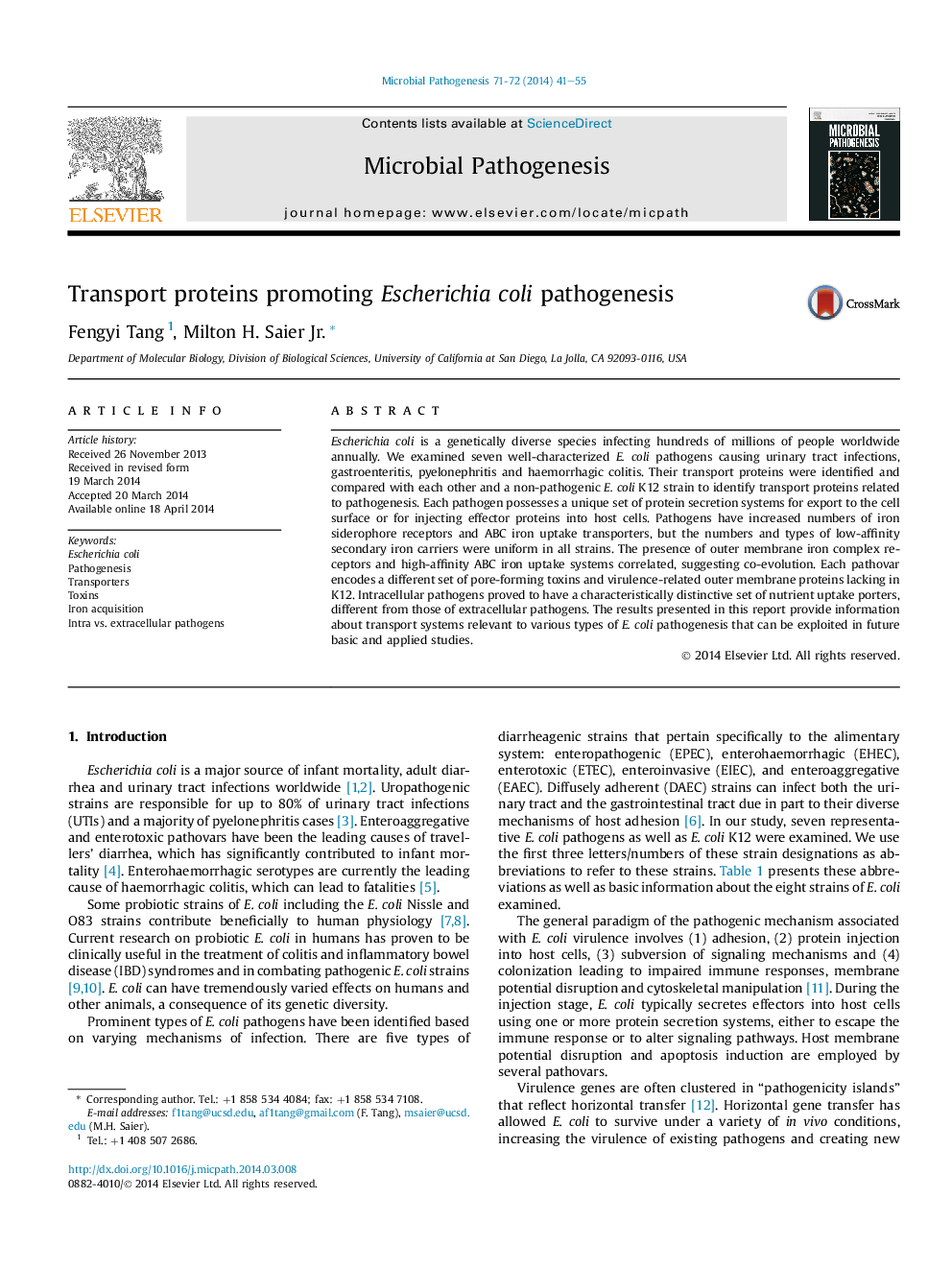| Article ID | Journal | Published Year | Pages | File Type |
|---|---|---|---|---|
| 3416579 | Microbial Pathogenesis | 2014 | 15 Pages |
•Each Escherichia coli pathogen have a unique set of pore-forming toxins•Pathogens have unique sets of protein secretion systems.•Pathogens have more iron siderophore receptors and high affinity ABC uptake porters.•Low affinity Fe uptake systems serve housekeeping functions unrelated to pathogenesis.•Distinct nutrient uptake systems are present in intra vs. extracellular pathovars
Escherichia coli is a genetically diverse species infecting hundreds of millions of people worldwide annually. We examined seven well-characterized E. coli pathogens causing urinary tract infections, gastroenteritis, pyelonephritis and haemorrhagic colitis. Their transport proteins were identified and compared with each other and a non-pathogenic E. coli K12 strain to identify transport proteins related to pathogenesis. Each pathogen possesses a unique set of protein secretion systems for export to the cell surface or for injecting effector proteins into host cells. Pathogens have increased numbers of iron siderophore receptors and ABC iron uptake transporters, but the numbers and types of low-affinity secondary iron carriers were uniform in all strains. The presence of outer membrane iron complex receptors and high-affinity ABC iron uptake systems correlated, suggesting co-evolution. Each pathovar encodes a different set of pore-forming toxins and virulence-related outer membrane proteins lacking in K12. Intracellular pathogens proved to have a characteristically distinctive set of nutrient uptake porters, different from those of extracellular pathogens. The results presented in this report provide information about transport systems relevant to various types of E. coli pathogenesis that can be exploited in future basic and applied studies.
Graphical abstractFigure optionsDownload full-size imageDownload as PowerPoint slide
